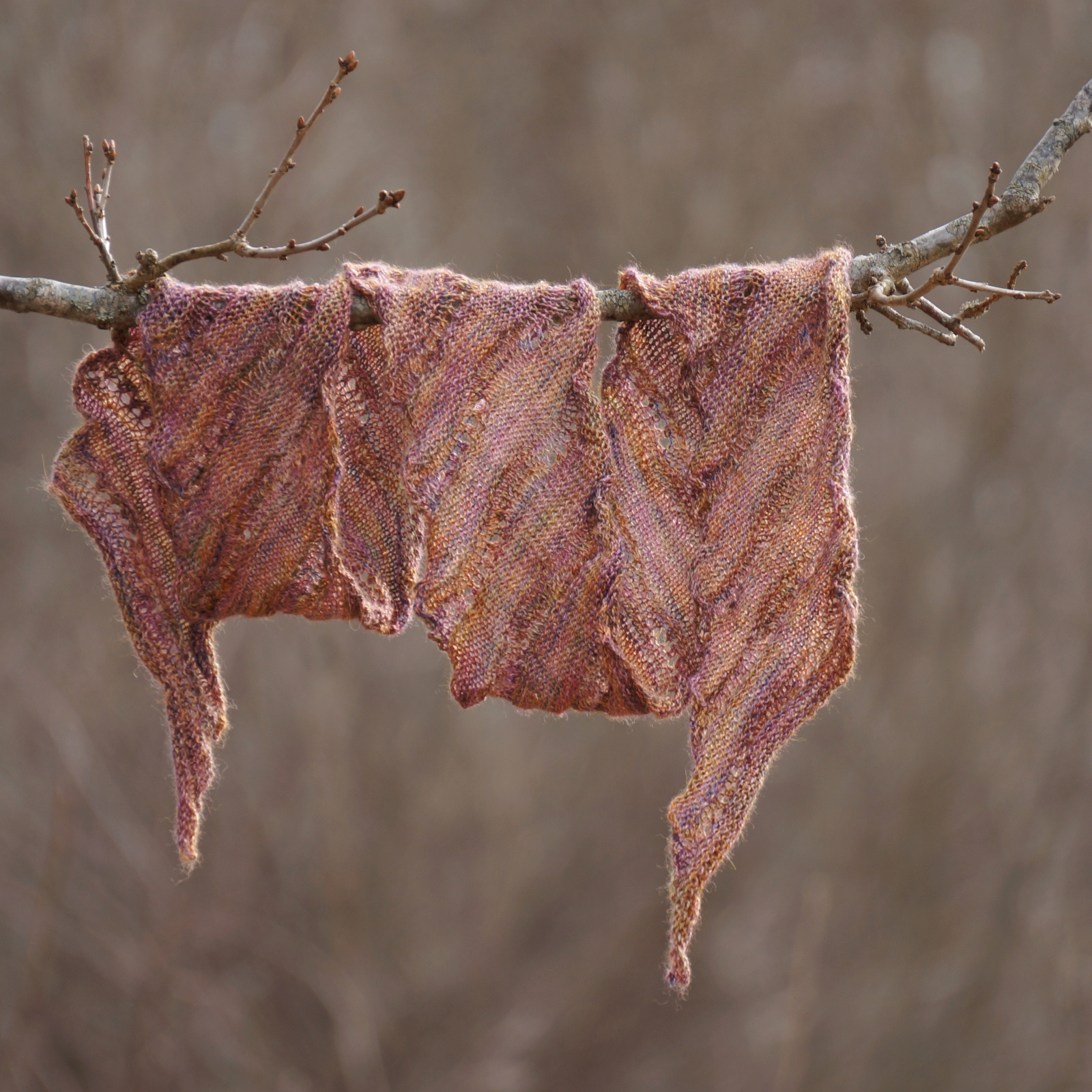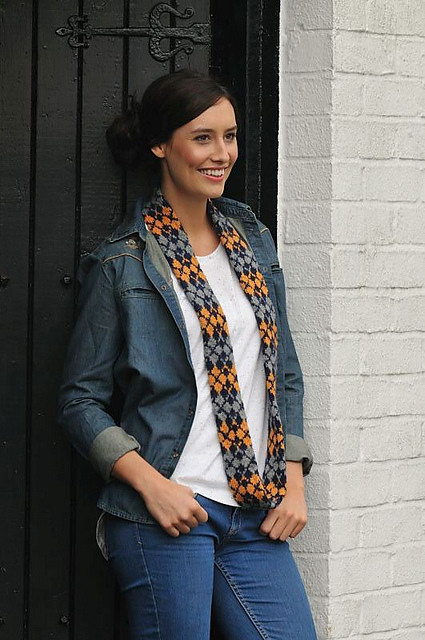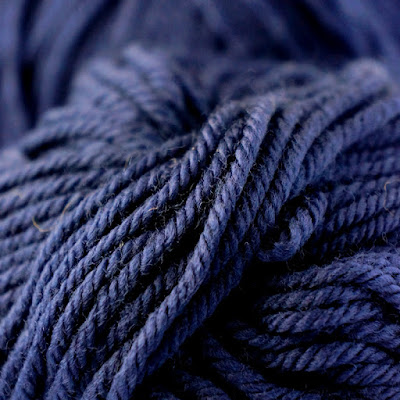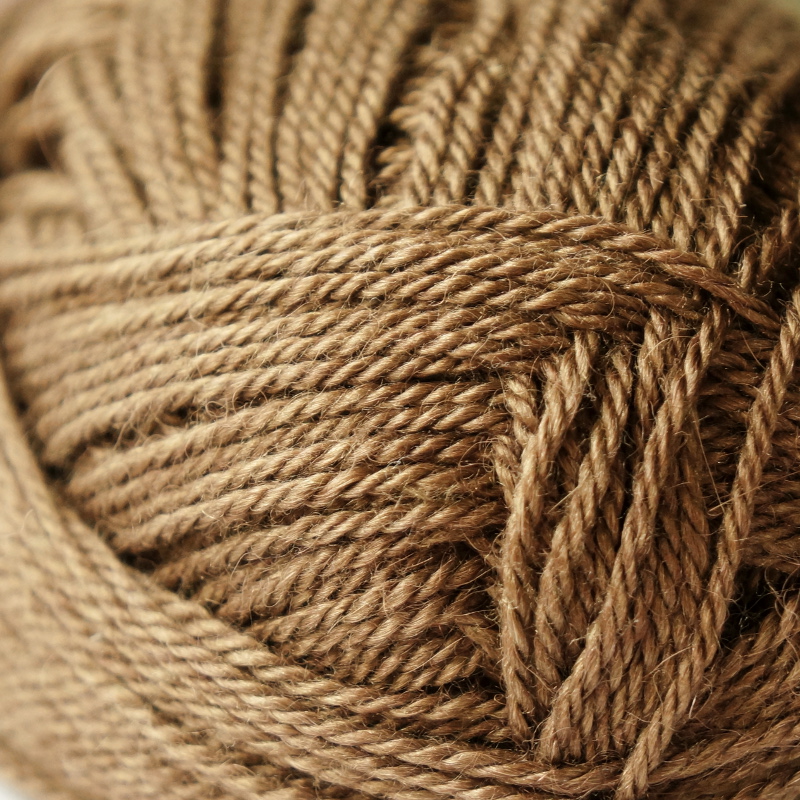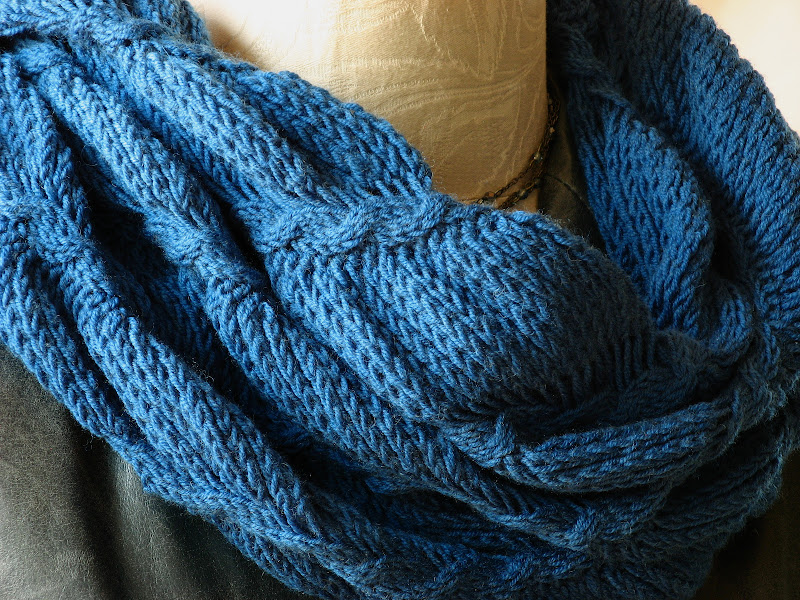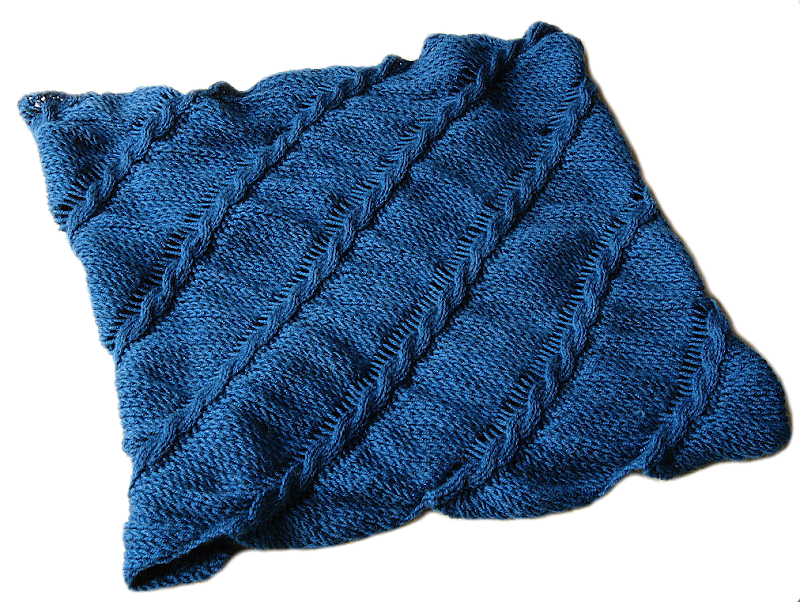Sometimes it is not about what you give as a gift, but the good thoughts and wishes behind it and how it's presented. Lots of warmth can be added by making the gift wrap with your own hands, therefore I designed a small pouch to knit just before Christmas.
With sport weight yarn the bag will be approximately 8 cm or 3 inches in diameter. And you can easily turn the pouch into a bottle cozy by knitting it taller.
Für deutsche Anleitung bitte runter scrollen!


Material:
• Yarn approximately 20 g/0.7 oz, tension 22-26 st per 10 cm/4 in
(cotton works best, wool might be too soft to stay in shape)
• Double pointed needles 3 mm/US 2½
• Ribbon
*...* – repeat the pattern between asterisks
A
Cast on 48 stitches.
Rd 1, 3 Purl all stitches
Rd 2 Knit all stitches
B
Rd 4 *k1, yo, k2, sl2 knitwise, k1, p2sso, k2, yo*
Rd 5, 7, 9 Knit all stitches
Rd 6 *k2, yo, k1, sl2 knitwise, k1, p2sso, k1, yo, k1*
Rd 8 *k3, yo, sl2 knitwise, k1, p2sso, yo, k2*
C
Rd 10 *k4, yo, k1, k2tog, k1*
Rd 11, 13, 14, 15 Knit all stitches
Rd 12 *k1, sl1, k1, psso, k1, yo, k1, yo, k1, k2tog*
Repeat rounds 10-15 six times or until desired height of the bag.
D
Rd 16 *k3, sl2 knitwise, k1, p2sso, k2*
Rd 17 *p3, k1, p2*
Rd 18 Knit all stitches
Work rounds 17 and 18 alternatively for seven rounds.
Rd 19 *k2, sl2 knitwise, k1, p2sso, k1*
Rd 20, 22 *p2, k1, p1*
Rd 21 Knit all stitches
Rd 23 *k1, sl2 knitwise, k1, p2sso*
Rd 24 *p1, k1*
Rd 25 *k2tog*
Pull the yarn through the remaining stitches, fasten and weave in the ends. Wash and block on a jar, if necessary. Add a ribbon through the holes of round 8.
The knitting chart:
 Notes:
Notes:
Found a great
video tutorial on the double decrease or sl2 knitwise, k1, p2sso used in this pattern.
The pdf-version of the pattern in both languages is available as a
Ravelry download. Feel free to post a link of your finished work in the comments or send me a photo. All comments and questions are welcome.
* * *
Strickanleitung für Geschenkbeutel
Manchmal ist es nicht so wichtig, was man schenkt, aber wie es gemacht wird und natürlich die gute Wünsche und Gedanken dahinten. Es gibt noch genügend Zeit bis Weihnachten, um diesen kleinen Geschenkbeutel zu stricken und mit selbstgemachter Verpackung noch mehr Herzlichkeit schenken.
Mit dünnerem Garn oder Sockenwolle gestrickt wird der Beutel mit einem Durchmesser von etwa 8 cm. Und höher gestrickt bekommt man eine tolle Flaschenhülle.

Material:
• Dünneres Garn etwa 20 g (Maschenprobe 22-26 M/10 cm)
• Nadelspiel 3 mm
• Satinband
Strickschrift: siehe oben
*...* – wiederholen
A
48 M anschlagen.
Rd 1, 3 Alle Maschen links str
Rd 2 Alle Maschen rechts str
B
Rd 4 *1 M re, 1 U, 2 M re, 2 M re abheben, 1 M re, 2 abgehob M darüber ziehen, 2 M re, 1 U*
Rd 5, 7, 9 Alle Maschen rechts str
Rd 6 *2 M re, 1 U, 1 M re, 2 M re abheben, 1 M re, 2 abgehob M darüber ziehen, 1 M re, 1 U, 1 M re*
Rd 8 *3 M re, 1 U, 2 M re abheben, 1 M re, 2 abgehob M darüber ziehen, 1 U, 2 M re*
C
Rd 10 *4 M re, 1 U, 1 M re, 2 M re zus str, 1 M re*
Rd 11, 13, 14, 15 Alle Maschen rechts str
Rd 12 *1 M re, 2 M re überzog zus str, 1 M re, 1 U, 1 M re, 1 U, 1 M re, 2 M re zus str *
Runden 10 bis 15 sechs Mal oder bis auf gewünschte Höhe wiederholen.
D
Rd 16 *3 M re, 2 M re abheben, 1 M re, 2 abgehob M darüber ziehen, 2 M re*
Rd 17 *3 M li, 1 M re, 2 M li*
Rd 18 Alle Maschen rechts str
Runden 17 und 18 wechselnd über sieben Runden wiederholen.
Rd 19 *2 M re, 2 M re abheben, 1 M re, 2 abgehob M darüber ziehen, 1 M re*
Rd 20, 22 *2 M li, 1 M re, 1 M li*
Rd 21 Alle Maschen rechts str
Rd 23 *1 M re, 2 M re abheben, 1 M re, 2 abgehob M darüber ziehen*
Rd 24 *1 M li, 1 M re*
Rd 25 *2 M re zus str*
Die restlichen Maschen mit dem Endfaden zusammenziehen, beide Endfaden nach innen gut verknoten und in die Arbeit vernähen. Ein Satinband durch die Umschlag-Löcher der Runde 8 ziehen.
Ich würde gerne nach dieser Anleitung gestrickte Beutelchen hier vorstellen, ihr könnt ein Link zu eurem Blog als Kommentar posten oder Fotos per E-Mail schicken. Alle Fragen und Kommentare sind auch willkommen.






